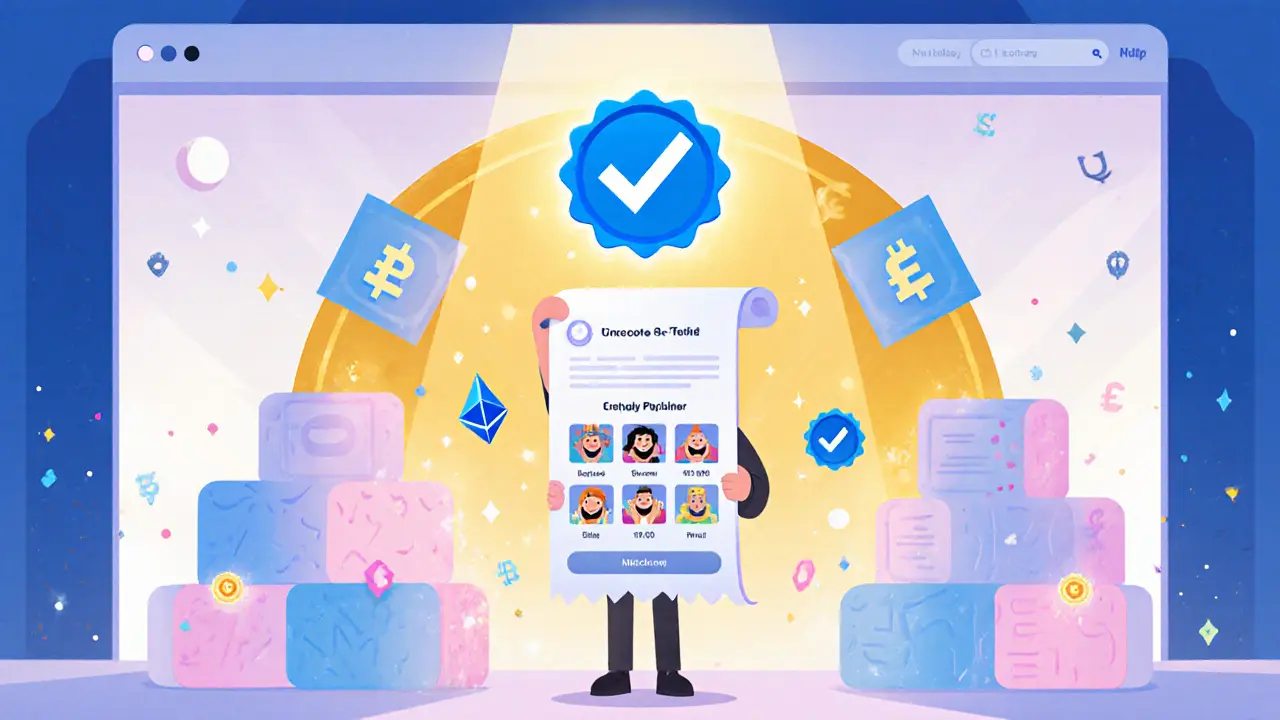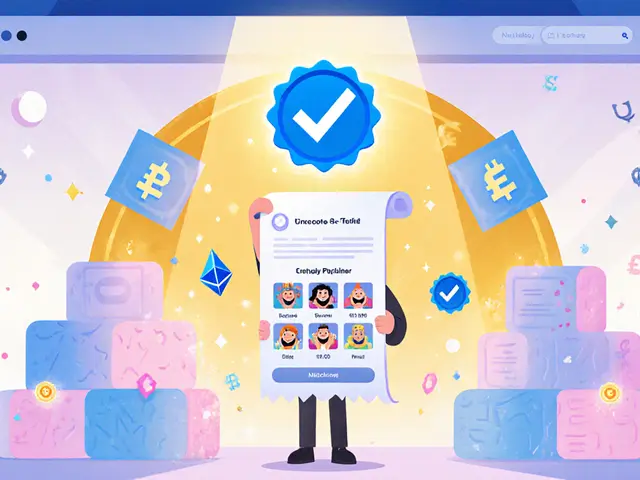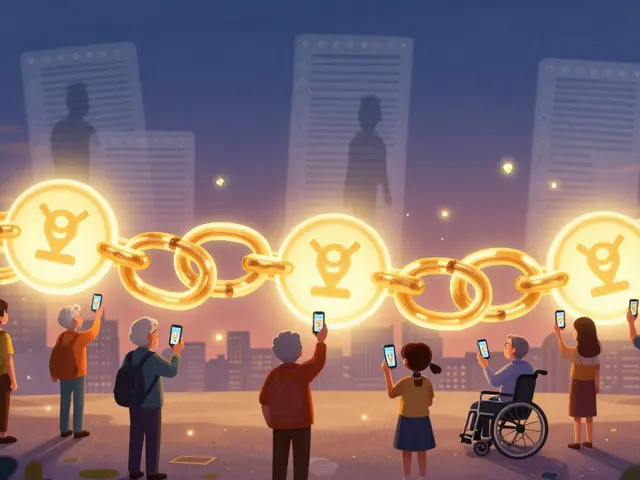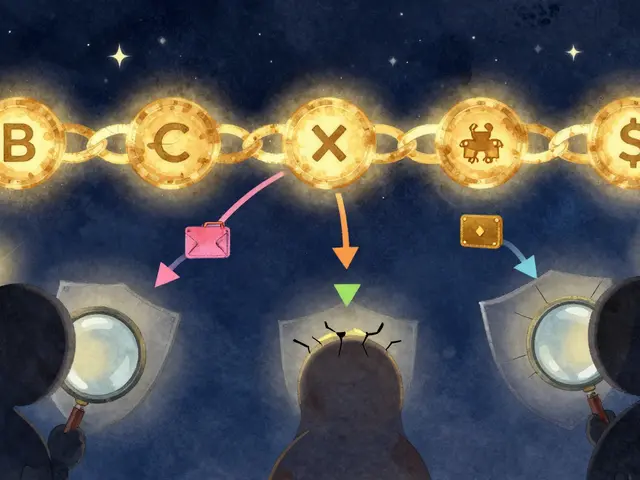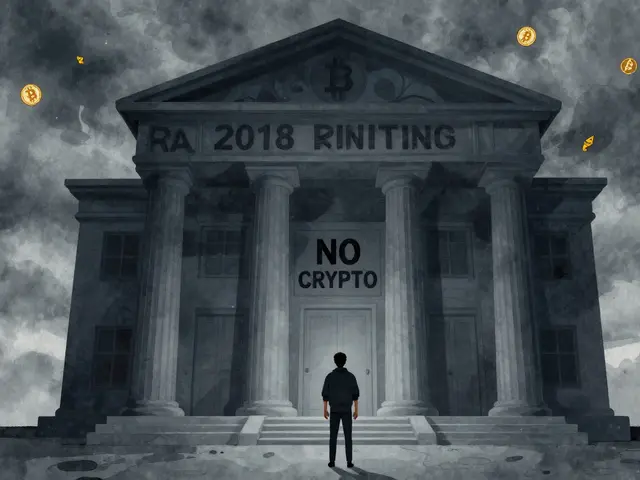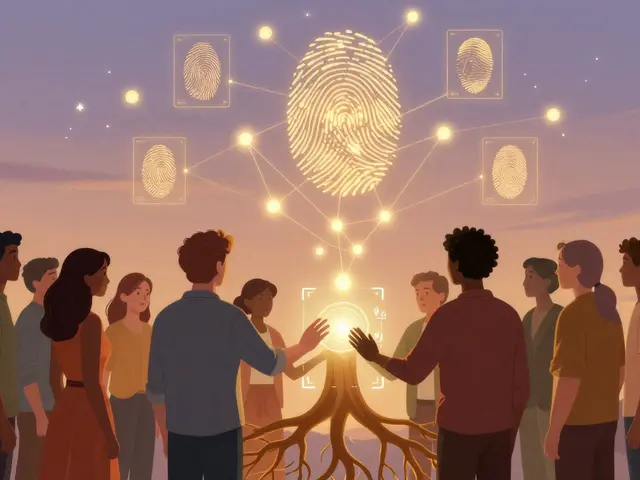NFT Marketplace Verification Comparison Tool
This tool compares verification criteria across major NFT marketplaces. Enter your collection details below to see which platforms might be best suited for your project.
Key Takeaways
- Verification mixes on‑chain data (trading volume, address legitimacy) with off‑chain checks (media coverage, founder ID).
- OpenSea, LooksRare, Blur and the now‑defunct X2Y2 each use a different mix of metrics and manual review.
- Zero‑knowledge proof (ZKP) proposals promise privacy‑first verification but are still experimental.
- Applying is usually a form + documentation; processing can range from a few days to several weeks.
- Understanding the exact criteria helps creators avoid costly re‑applications and builds credibility faster.
When you scroll through an NFT marketplace and see a blue checkmark next to a collection, you assume the project has been vetted. But what does that check really mean? Below we break down the exact steps marketplaces take to confirm a collection’s authenticity, the data they rely on, and the emerging technical standards that could change the game.
NFT collection verification is a process used by NFT marketplaces to authenticate the legitimacy of a project, prevent impersonation, and signal trust to buyers. It combines on‑chain metrics, manual review, and sometimes cryptographic proofs.
Technical Foundations Behind Verification
Most platforms start with data that lives on the blockchain. This includes the contract address, token IDs, and transaction history. A few concrete technical steps are common across the industry:
- Confirm the contract follows ERC‑721 or ERC‑1155 standards.
- Check that the contract creator address is not flagged for previous fraud.
- Analyze trading volume and price stability over a set period.
- Validate that the collection does not duplicate another well‑known project's metadata.
These checks can be run automatically via APIs. For example, Moralis offers a developer‑friendly API to pull verified collection data directly from the blockchain. A typical script pulls the contract address, queries the verification flag, and returns a boolean response in under a minute.
Volume‑Based Criteria - The Numbers Game
Marketplace A might say, “We only verify collections that have moved 250ETH on our platform.” That’s the approach taken by LooksRare which requires at least 250ETH of on‑platform volume or 500ETH across the broader ecosystem before a verification request is accepted. The logic is simple: high trade volume suggests genuine buyer interest and reduces the chance of a new scam project slipping through.
Other platforms use lower thresholds or combine volume with other signals. OpenSea has a tiered system where collections need a minimum of 10ETH in total sales and additional proof of legitimacy before the blue check is granted. This lower barrier makes it easier for newer creators, but the manual review component becomes more rigorous.
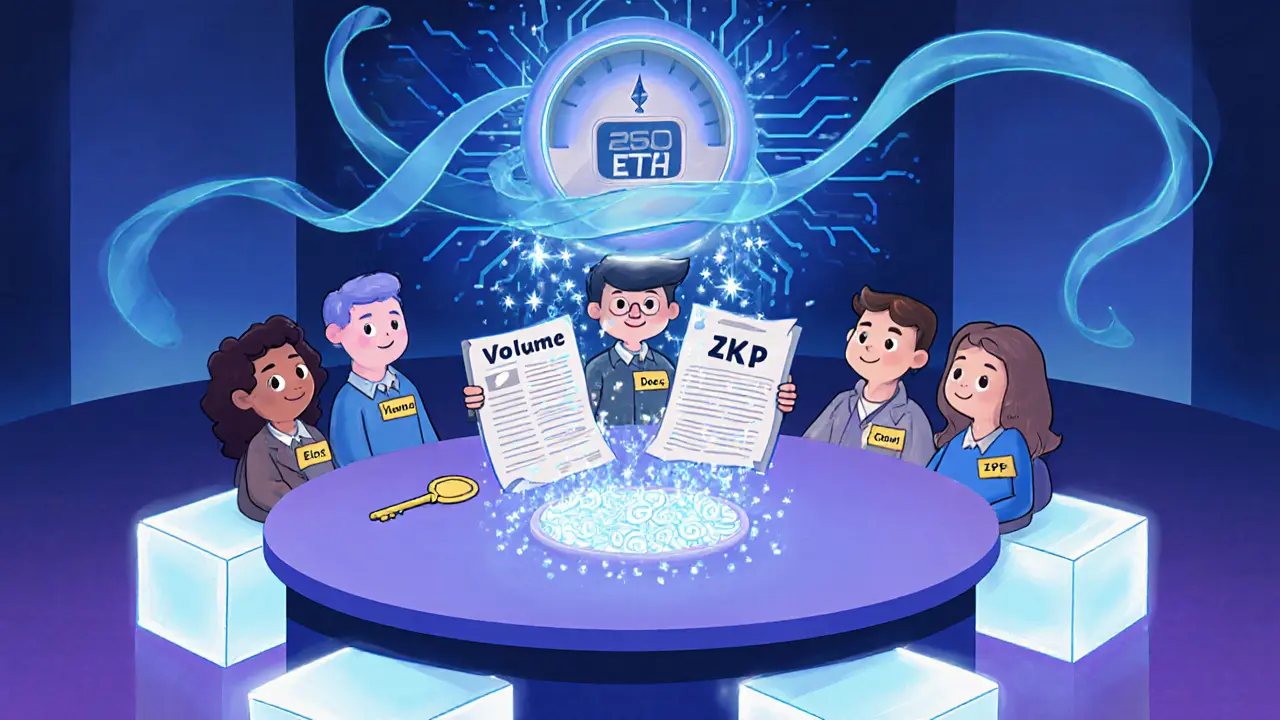
Manual Review & Off‑Chain Documentation
Even if a collection meets the volume requirement, most marketplaces still require a manual audit. This usually involves:
- Providing links to official social media accounts.
- Submitting founder IDs or a company registration document.
- Showing third‑party media coverage (e.g., TechCrunch, CoinDesk).
Emerging Cryptographic Approaches
Traditional verification is labor‑intensive and still prone to human error. A 2023 Ethereum Research thread introduced a privacy‑first model using zero‑knowledge proofs (ZKPs) that let a seller prove ownership and authenticity of an NFT without revealing the underlying data. The core steps involve:
- Generating a nullifier hash for the seller’s spend transaction.
- Submitting cryptographic proofs that the nullifier hasn’t been used before (preventing double‑spend).
- Updating a Merkle tree on‑chain that records verified collections.
The Ethereum Name Service (ENS) also floated a lighter solution: attaching an ENS domain to a collection’s metadata so a user can display a verified badge. As of September2023 the proposal remains unimplemented, but it hints at a future where verification could be handled entirely off‑chain, reducing friction for creators.
Step‑by‑Step: How to Request Verification on the Major Platforms
Below are the practical steps you’ll need to follow for the four most popular marketplaces.
- OpenSea
- Navigate to the Verification Request page (found under the collection’s settings).
- Upload a short video introduction of the founders.
- Provide at least two reputable media articles covering the launch.
- Submit and wait 4‑12weeks; you’ll receive an email if additional info is required.
- LooksRare
- Ensure you have 250ETH of on‑platform trading volume (or 500ETH total).
- Click the “Request Verification” button on the collection overview page.
- Fill out the form with the contract address, creator’s Twitter handle, and a brief project summary.
- Processing typically takes 3‑7business days.
- Blur
- Visit the Blur verification portal and upload a PDF containing the project’s whitepaper.
- Attach legal entity proof (company registration or DAO charter).
- Submit; Blur does not publish an average timeline, but community reports suggest 2‑4weeks.
- X2Y2 (historical reference)
- When active, X2Y2 required 100ETH of volume plus a manual check.
- The program was discontinued in Q42022, illustrating how verification policies can change quickly.
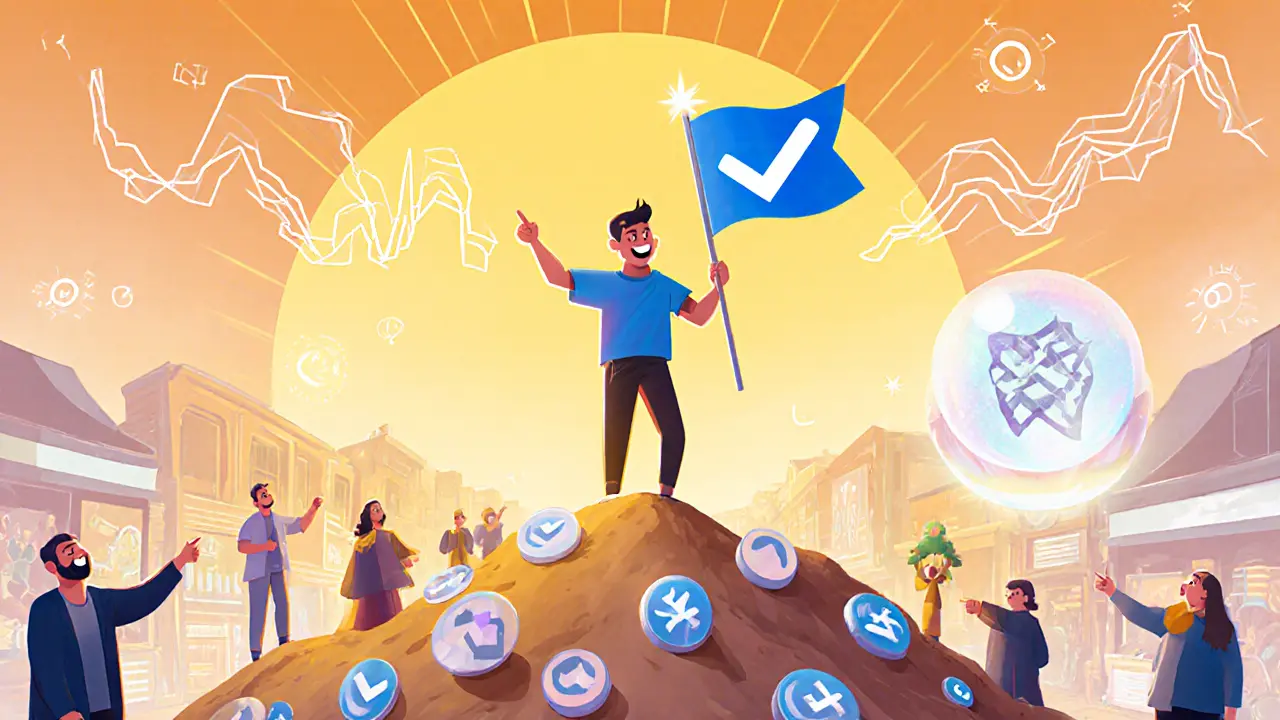
Comparison of Verification Systems
| Platform | Volume Threshold | Manual Review | Docs Required | Avg. Processing Time | Notes |
|---|---|---|---|---|---|
| OpenSea | 10ETH total sales | Yes - credibility check | Media coverage, founder ID, video intro | 4‑12weeks | Most prestigious badge, low volume bar |
| LooksRare | 250ETH on‑platform (or 500ETH ecosystem) | Yes - impersonation screening | Contract address, brief summary, social links | 3‑7days | Objective volume metric, fast turnaround |
| Blur | Not publicly disclosed | Yes - thorough legal review | Whitepaper, legal entity proof | 2‑4weeks (community estimate) | Higher barrier, no explicit volume rule |
| X2Y2 (legacy) | 100ETH | Yes - manual vetting | Project overview, social proof | 7‑10days (when active) | Program discontinued Q42022 |
Benefits, Risks, and Common Pitfalls
Benefits of a verified badge include higher visibility in marketplace feeds, a perceived 37% boost in trading volume (per Nansen, Aug2023), and better buyer confidence. However, verification is not a guarantee of quality; scammers sometimes exploit the badge to run wash‑trading schemes, which rose 22% among verified collections.
Risks include the cost of meeting volume thresholds (especially for indie creators), the potential for delayed launches while waiting for approval, and the opacity of manual reviews that can lead to arbitrary rejections.
Typical mistakes creators make:
- Submitting outdated social links that no longer point to the official account.
- Ignoring the importance of on‑chain metadata consistency (e.g., token URI mismatches).
- Relying solely on volume without a clear brand narrative, causing manual reviewers to flag the project as “impersonation risk”.
Choosing the Right Path for Your Project
If you’re a new creator with limited capital, aim for OpenSea’s lower volume bar and invest time in strong media outreach. If you already have a solid trading record, LooksRare’s fast‑track verification can give you a quick credibility boost. For projects focused on privacy or future‑proofing, keep an eye on the zero‑knowledge proof proposals-early adopters may gain a competitive edge once the tech matures. In any case, maintain clean on‑chain metadata, keep social channels up to date, and prepare a concise documentation package. This preparation reduces the chance of getting stuck in a back‑and‑forth with support teams.
Frequently Asked Questions
What does a blue checkmark actually guarantee?
It indicates the marketplace has confirmed the collection’s contract address and found no obvious signs of fraud. It does not endorse the project's artistic value or future price performance.
Can I get verified on multiple marketplaces at once?
Yes. Each platform runs its own review, so you’ll need to submit separate applications and meet each site’s specific criteria.
How long does a verification stay valid?
Most marketplaces consider verification perpetual, but they reserve the right to revoke the badge if the collection later violates policies or is proven fraudulent.
Is there a way to verify without meeting volume thresholds?
OpenSea’s recent updates allow verification with as little as 10ETH if you can provide strong off‑chain proof (media coverage, founder ID). Blur also accepts applications without explicit volume numbers, focusing on legal documentation instead.
Will zero‑knowledge proof verification replace current systems?
It’s promising for privacy and anti‑double‑spend guarantees, but high gas fees and developer overhead keep it in the experimental stage. Expect hybrid models that combine ZKP checks with traditional volume/metadata validation in the next few years.
